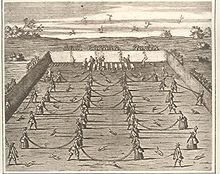
The beagle is a breed of small scent hound, similar in appearance to the much larger foxhound. The beagle was developed primarily for hunting hare known as beagling. Possessing a great sense of smell and superior tracking instincts, the beagle is the primary breed used as a detection dog for prohibited agricultural imports and foodstuffs in quarantine around the world. The beagle is intelligent and is a popular pet due to its size, good temper, and a lack of inherited health problems.

A sling is a projectile weapon typically used to throw a blunt projectile such as a stone, clay, or lead "sling-bullet". It is also known as the shepherd's sling or slingshot. Someone who specializes in using slings is called a slinger.

Hunting is the human practice of seeking, pursuing, capturing, or killing wildlife or feral animals. The most common reasons for humans to hunt are to harvest food and useful animal products, for recreation/taxidermy, to remove predators dangerous to humans or domestic animals, to eliminate pests and nuisance animals that damage crops/livestock/poultry or spread diseases, for trade/tourism, or for ecological conservation against overpopulation and invasive species.

Fox hunting is an activity involving the tracking, chase and, if caught, the killing of a fox, traditionally a red fox, by trained foxhounds or other scent hounds. A group of unarmed followers, led by a "master of foxhounds", follow the hounds on foot or on horseback. In Australia, the term also refers to the hunting of foxes with firearms, similar to deer hunting.
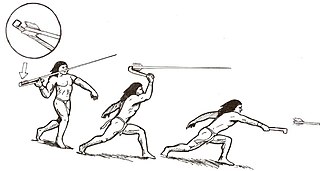
A spear-thrower, spear-throwing lever or atlatl is a tool that uses leverage to achieve greater velocity in dart or javelin-throwing, and includes a bearing surface which allows the user to store energy during the throw.

Augustus II, most commonly known as Augustus the Strong, was Elector of Saxony from 1694 as well as King of Poland and Grand Duke of Lithuania in the years 1697–1706 and from 1709 until his death in 1733. He belonged to the Albertine line of the House of Wettin.

Venatio was a type of entertainment in Roman amphitheaters involving the hunting and killing of wild animals.
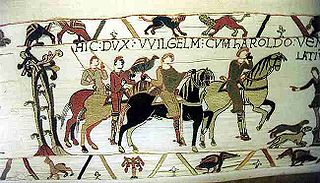
Throughout Western Europe in the Middle Ages, humans hunted wild animals. While game was at times an important source of food, it was rarely the principal source of nutrition. All classes engaged in hunting, but by the High Middle Ages, the necessity of hunting was transformed into a stylized pastime of the aristocracy. More than a pastime, it was an important arena for social interaction, essential training for war, and a privilege and measurement of nobility.

A blood sport or bloodsport is a category of sport or entertainment that involves bloodshed. Common examples of the former include combat sports such as cockfighting and dog fighting, and some forms of hunting and fishing. Activities characterized as blood sports, but involving only human participants, include the Ancient Roman gladiatorial games.

Bottle-kicking is an old Leicestershire custom that takes place in the village of Hallaton each Easter Monday. It is an outdoor sport played across a mile-long playing area, in which two teams attempt to move a wooden barrel across the opposing team's stream at the far end of the area.

Cock throwing, also known as cock-shying or throwing at cocks, was a blood sport widely practised in England until the late 18th century. A rooster was tied to a post, and people took turns throwing coksteles at the bird until it died. Cock throwing was traditionally associated with Shrove Tuesday. A contributor to The Gentleman's Magazine in 1737, during an anti-Gallican phase of British culture, was of the opinion that cock throwing arose from traditional enmity towards the French, for which the cock played an emblematic role.

The island of Great Britain, along with the rest of the archipelago known as the British Isles, has a largely temperate climate. It contains a relatively small fraction of the world's wildlife. The biota was severely diminished in the last ice age, and shortly thereafter was separated from the continent by the English Channel's formation. Since then, humans have hunted the most dangerous forms to extinction, though domesticated forms such as the dog and the pig remain. The wild boar has subsequently been reintroduced as a meat animal.
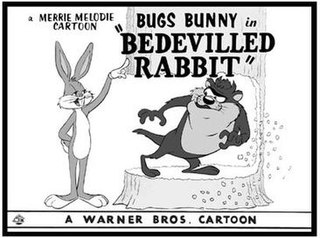
Bedevilled Rabbit is a 1957 Warner Bros. Merrie Melodies short directed by Robert McKimson. The short was released on April 13, 1957, and stars Bugs Bunny. In this cartoon, Bugs is lost in Tasmania, and has to deal with the Tasmanian Devil.

The inaugural games were held, on the orders of the Roman Emperor Titus, to celebrate the completion in AD 80 of the Colosseum, then known as the Flavian Amphitheatre. Vespasian began construction of the amphitheatre around AD 70 and it was completed by his son Titus, who became emperor following Vespasian's death in AD 79. Titus' reign began with months of disasters – including the eruption of Mount Vesuvius, a fire in Rome, and an outbreak of plague – he inaugurated the completion of the structure with lavish games that lasted for more than one hundred days, perhaps in an attempt to appease the Roman public and the gods.

Shoe-tossing, also known as shoefiti, is the act of using footwear as a projectile in a number of folk sports and cultural practices. Shoe-tossing entails throwing a pair of laced shoes onto raised wires, such as telephone wires and power lines, or tree branches, creating "shoe trees".
Romania has a long history of hunting and remains a remarkable hunting destination, drawing many hunters because of its large numbers of brown bears, wolves, wild boars, red deer, and chamois. The concentration of brown bears in the Carpathian Mountains of central Romania is largest in the world and contains half of all Europe's population, except Russia.
A limer, or lymer, was a kind of dog, a scenthound, used on a leash in medieval times to find large game before it was hunted down by the pack. It was sometimes known as a lyam hound/dog or lime-hound, from the Middle English word lyam, meaning 'leash'. The French cognate limier has sometimes been used for the dogs in English as well. The type is not to be confused with the bandog, which was also a dog controlled by a leash, typically a chain, but was a watchdog or guard dog.
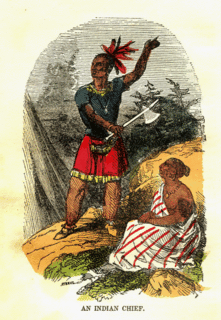
Native American weaponry was used by Native American warriors to hunt and to do battle with other Native American tribes and European colonizers.
Kazakh clothing, worn by the Kazakh people, is often made of materials suited to the region's extreme climate and the people's nomadic lifestyle. It is commonly decorated with elaborate ornaments made from bird beaks, animal horns, hooves and feet. Although contemporary Kazakhs usually wear Western dress, the Turkic people wear more traditional clothing for holidays and special occasions.
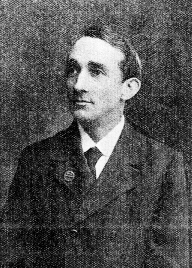
Henry Brown Amos was a Scottish animal rights and vegetarianism activist, and humanitarian.


